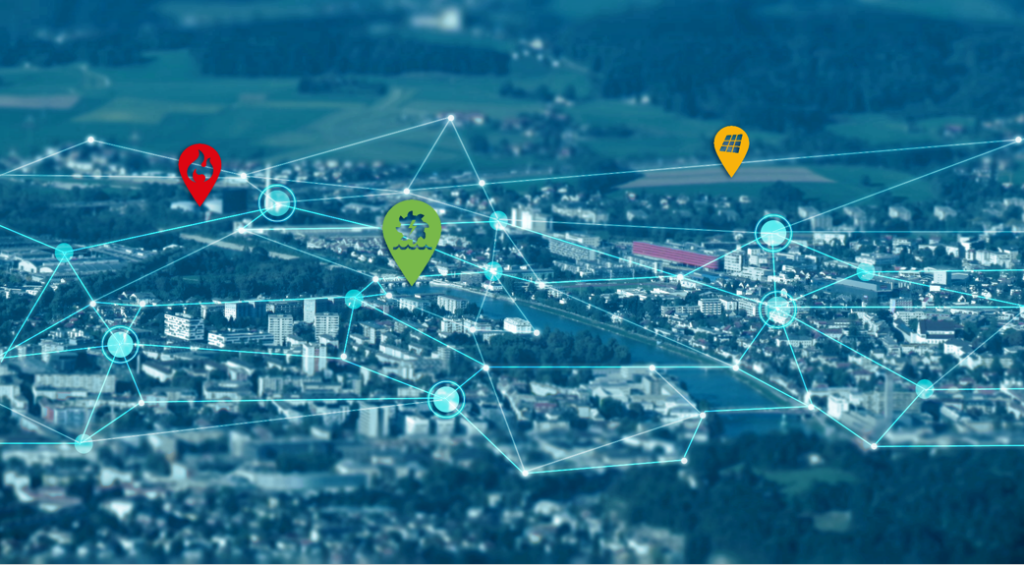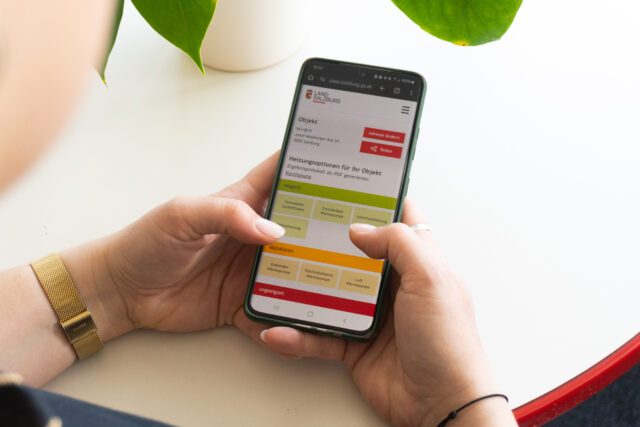Energy-related data
Integrating a new, highly complex subject area such as energy into planning is challenging – both in terms of resources and in terms of the specific expertise required. Well-founded and target group-orientated information bases can significantly reduce the high level of complexity and thus contribute to effective workability. In the subject area ‘Energy-related information bases for planning and implementation’, we are concerned with collecting existing data and preparing it in an easily understandable form that is suitable for the respective target group.
The energy transition requires new, sustainable energy supply solutions – from private PV systems on the roof to large wind farms and heating networks. However, this also raises many new questions: What am I allowed to do where? Which European and national requirements and targets need to be taken into account? And for municipalities and regions: What tasks will the administration be faced with and how can the new solutions be integrated into the administrative structures? The SIR provides support in answering these questions.
Provide energy-related data and information bases
For more than a decade now, the SIR has been working on the preparation of the basic information required for effective energy planning. In close co-operation with researchers, provincial governments and energy suppliers from all over Austria, a sound basis has been created through various research projects. By processing hundreds of data sources and thousands of individual attributes, the developed system can provide well-founded information in the areas of building data, energy requirements, energy supply infrastructure and renewable energy sources for specific buildings. The information is integrated into SAGIS and made available for a wide range of applications. At the same time, research projects are constantly working on further improving, deepening and broadening the information – and preparing it for later use in real-life operations.
Developing innovations
Local authorities at all levels of governance are setting themselves ambitious targets in the area of climate protection and the energy transition. At the same time, it is not always clear which instruments are actually available to support these goals. Options for action and decision-making must be worked out on the basis of the given legal framework and subsequently mapped in the administrative processes in such a way that efficient handling is possible. One example in the context of energy planning is zoning. In areas with specific characteristics (e.g. areas that are fundamentally suitable for a grid-connected heat supply due to their heat demand), specific solutions (e.g. connection to or construction of a heating grid) could be promoted through regulatory instruments (e.g. development planning).
At the SIR, we are constantly monitoring the development of the legal framework and the emerging tasks for the regions and municipalities and are not only developing the information basis necessary for decision-making, but are also endeavouring to directly support process innovation by developing new decision-making routines together with the local authorities.
Present and communicate information
Spatial energy planning is used in a wide variety of areas: From strategy development, monitoring and reporting to local spatial planning and municipal heat planning, including project development (buildings and infrastructure) to information and consulting. In order to be able to take the complex subject of energy into account in the respective processes, an easy-to-understand, user-centred preparation is required. With the energy atlas in SAGIS, automated analyses, e.g. for energy in the spatial development concept or for area developments, as well as the EnergyCompass and dashboard solutions, we use various forms of presentation for compact and target group-oriented communication.
GEL S/E/P to PREP
In 2016, structured work began in Salzburg on developing the necessary foundations for the effective implementation of spatial energy planning. With a bundle of cross-provincial research projects (enerspired cities, GEL S/E/P I & II) the first applications in spatial planning practice were launched in 2020. The system, which was developed under the leadership of the SIR with over 25 partners and the participation of three federal states, has now become the national standard and has also been made available to the other federal states in the spatial energy planning platform since 2025. This makes Austria an international pioneer in the field of energy-related information bases.
Research projects
As SIR, we are constantly involved in research projects in the context of spatial energy planning. This means that existing foundations are continuously being methodically improved and expanded and new foundations created. For example, we are currently working on the following projects „ALPHA“ and ‘Anergie-leicht-gemacht’ are working on identifying areas with potential for the construction of low-temperature grids and providing a basis for planning. In the ‘topview’ project, we are also focussing on the use of satellite data for spatial energy planning. Together with AEE Intec and AIT, we are the representatives for Austria in the IEA TCP Cities Task 2 sand bring the latest findings from countries with a great deal of expertise in the field of energy planning (such as Germany, the Netherlands, France and Canada) to Austria.
EnergyCompass
The EnergyCompass is the independent guide to sustainable energy supply for homeowners. Many people today want to invest in a sustainable energy supply for their building in order to reduce costs and protect the environment. However, there is often a great deal of uncertainty when making investment decisions due to the large number of options now available and the complexity of planning.
The EnergyCompass solves this problem by providing all the relevant information at the touch of a button. Users only need to enter their address and can use the EnergyCompass directly. With a clear comparison of possible options, an overview of costs and environmental impact, a precise presentation of available subsidies (federal and state) and contact with professionals who can implement the project, the EnergyCompass provides all the information needed to take the next steps towards investment with a good feeling and full clarity.
The HeatingCheck has been available since the end of 2024. The PV check will be available to the public in mid-2025. The RenovationCheck is currently under development and is due to follow in 2026.

Ivana Gramatikova, M. Arh
Spatial energy planning

Dipl.-Geogr. Judith Draschl, MSc
Spatial energy planning

Christina Standl, MSc
Spatial energy planning

